Dividing Sourdough After Shaping & Cold Fermentation: An Experiment
This post may contain affiliate links.
I thought it would be cool to see what happens when you take a sourdough loaf that's already been shaped and cold fermented and split it right before baking. I've done a few different experiments with both batards and boules to show you what happens!
Why? Because sometimes life happens. Maybe you've got a batard in the fridge but you want to make sourdough garlic bread and need smaller baguette style loafs. Or maybe you've got a boule in the fridge but you now you need some dinner rolls for an impromptu dinner with friends. I want to show you what's possible!
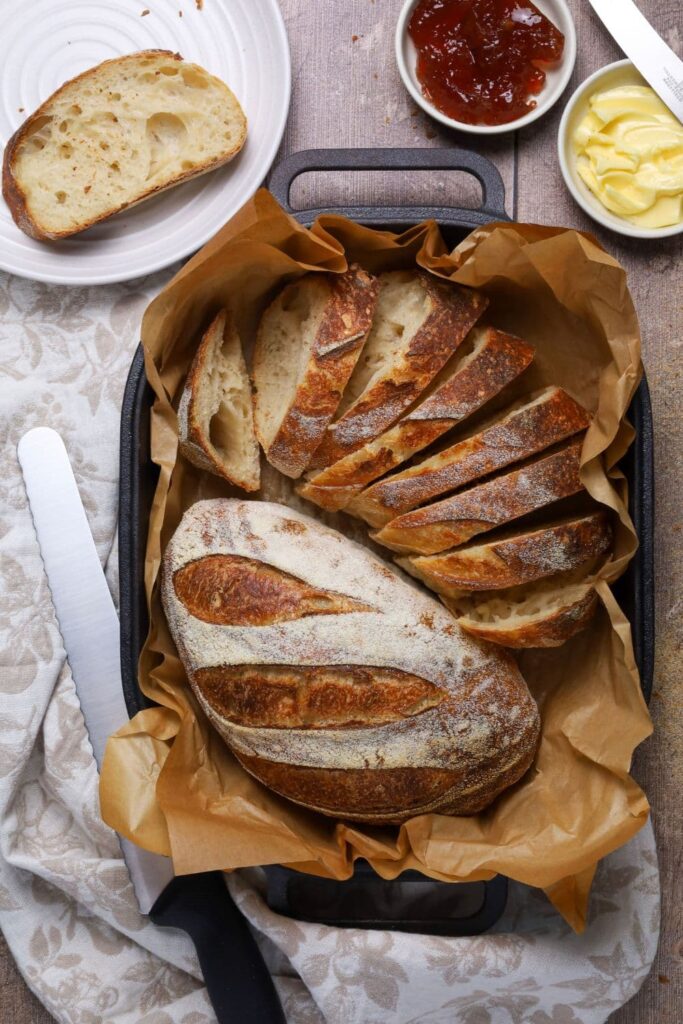
A Few Things To Note
For all of the experiments in this post:
- I've used my simple sourdough recipe which uses 500g of flour
- For the batards, I'm using a 9" oval banneton.
- For the boules, I'm using a 9" round banneton.
- All of the dough has been bulk fermented until doubled, shaped and then transferred to the fridge for cold fermentation.
- All of the dough has been cold fermented for a minimum of 24 hours, so it's well and truly settled into it's shape in the banneton. You can see evidence of the long cold fermentation in the amount of sourdough blisters on the crusts.
You're Not Really Re-Shaping
Something to remember here is, as a general rule, you can't actually reshape sourdough once it's been shaped and cold fermented. If you reshape it from this point you will knock all the gas and bubbles out of the gluten structure and they will not reform as there is not sufficient energy left in the dough. So if you've made a boule, you can't then change it to a batard once it's been in the fridge for 24 hours.
The shape changing I am doing here isn't really reshaping so much as cutting and resealing the dough. You are going to lose some of the precious gas trapped inside your loaf, however, if you are careful and make the cuts clean, you should get a good result. The key here is to cut the dough cleanly while still leaving majority of the gas inside and the gluten structure intact.
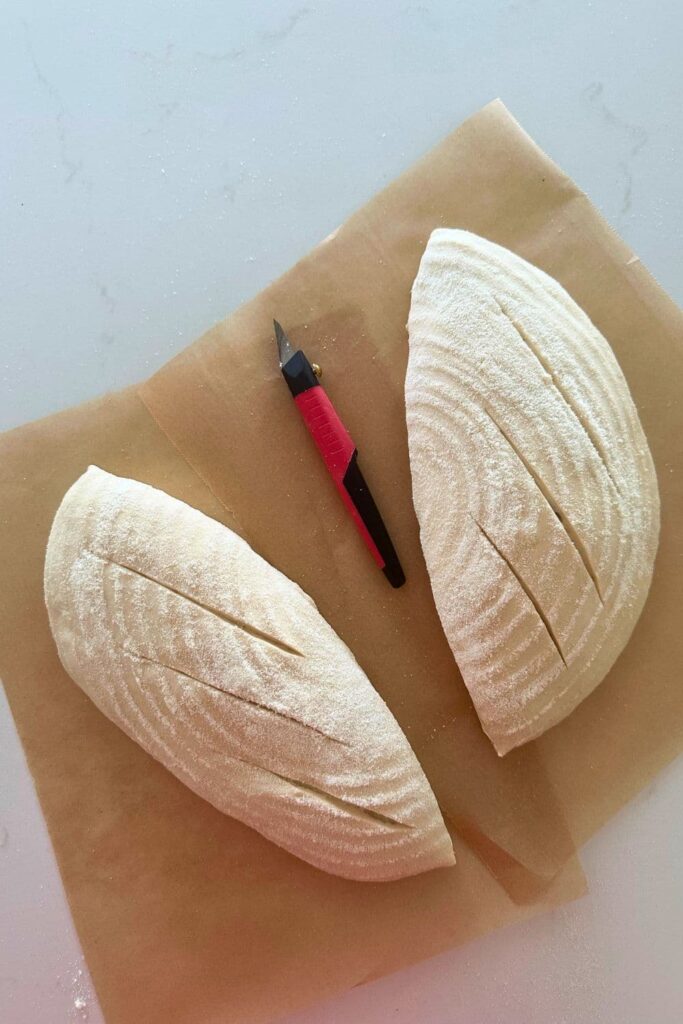
So What's Possible?
I've experimented with all kinds of situations so you can see what you might be able to do in your own kitchen (I love experimenting with sourdough so much)! I made a tonne of batards and boules and spent weeks cutting them into all sorts of different shapes to see what worked and what didn't. Here are the shapes that I found worked the best.
Boule divided into:
- 2 batard shaped loaves (they're shorter, fatter loaves but they slice up so well)
- 4 smaller round loaves (you can cut the boule into quarters, gently reseal and then place 2 each inside a Dutch oven - these make great sourdough bread bowls).
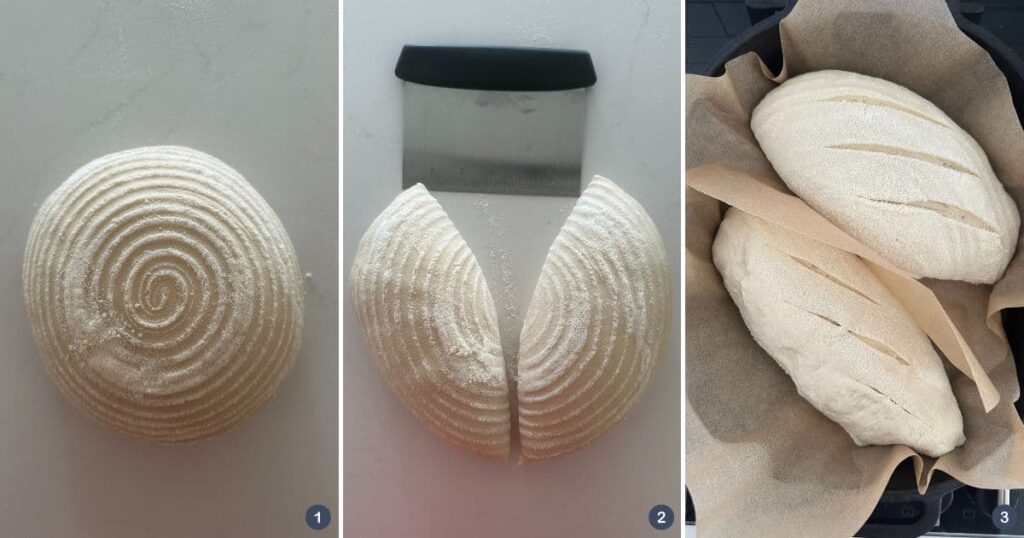
Batard divided into:
- 2 baguette style loaves
- 4 larger batard style rolls.
- 8 round crusty bread rolls.
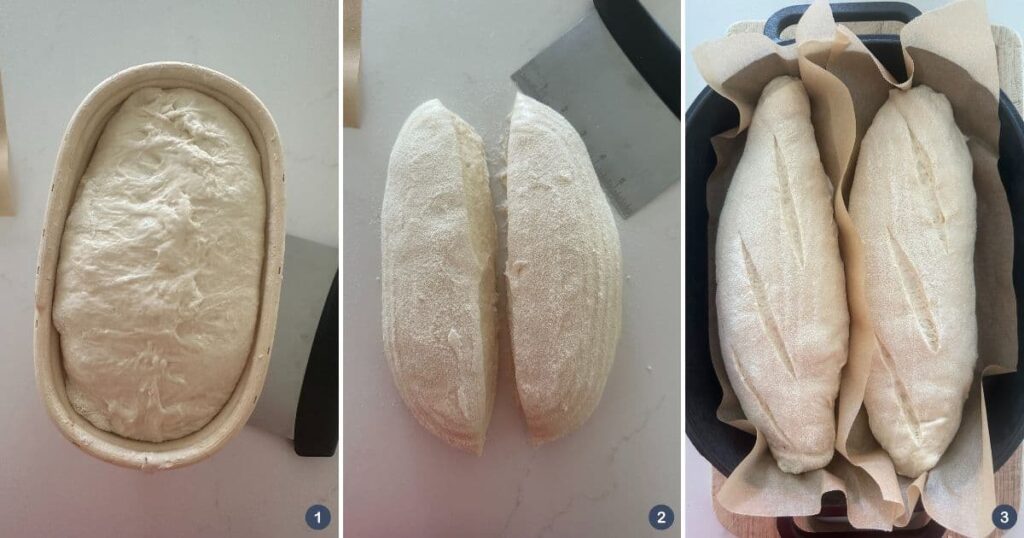
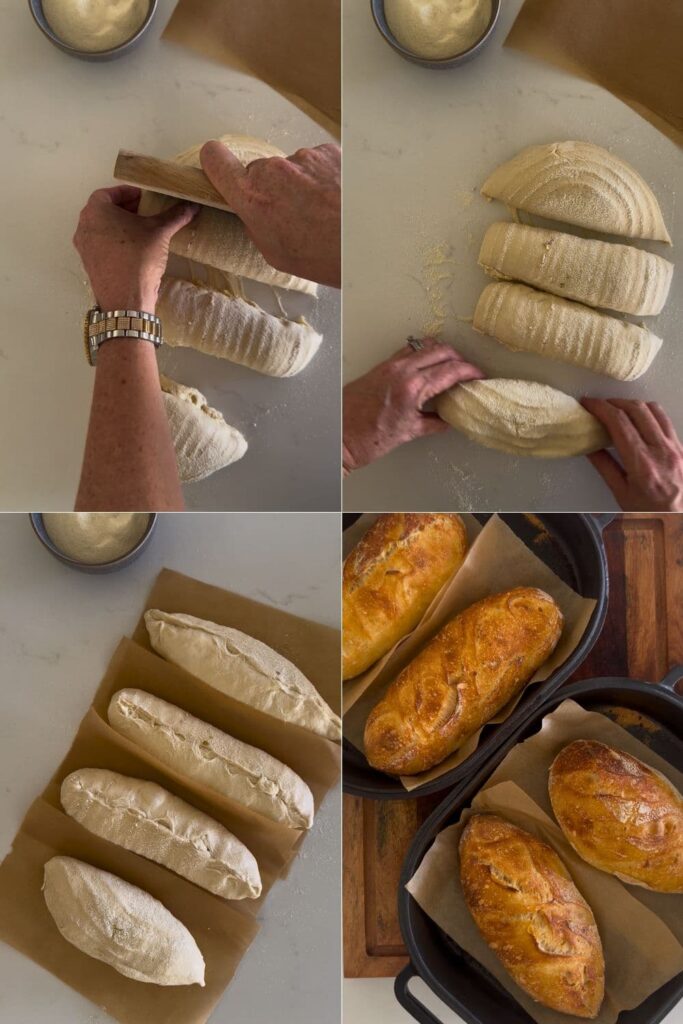
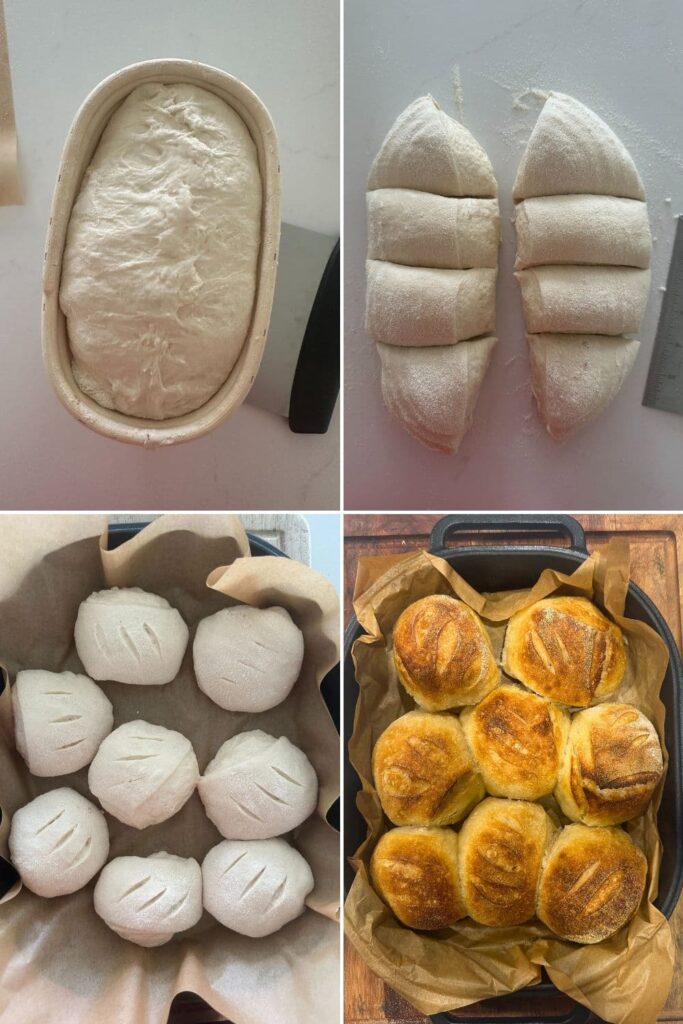
How To Ensure Success With This Method
I've experimented with this method across more loaves than I care to count now (seriously, we had so many smaller loaves at one point that I had to start giving it away as our freezer was overflowing). Here are my best tips for dividing dough into different shapes after cold fermentation:
- Fermentation is key - over fermented dough will collapse when cut, so you want to make sure you get bulk fermentation right. This is a good read if you're looking for tips on how to tell when bulk fermentation is finished. Good fermentation also prevents the dough from being sticky when cut.
- Use a Sharp Dough Scraper - you want clean cuts that don't tear the dough or stretch the gluten network, which will cause more gas than necessary to escape, meaning flat loaves once they hit the oven. Cut straight down to preserve the air bubbles, don't pull the dough. A metal dough scraper with a sharp edge is best to perform these cuts.
- Be Mindful with Flour - Try not to use too much flour when cutting and sealing the dough because it can prevent you from being able to fully reseal it. If you can't reseal the dough fully, you can tuck the seam underneath to hide it a little bit.
If you love experimenting with sourdough, check out these 8 sourdough experiments every sourdough baker must try!
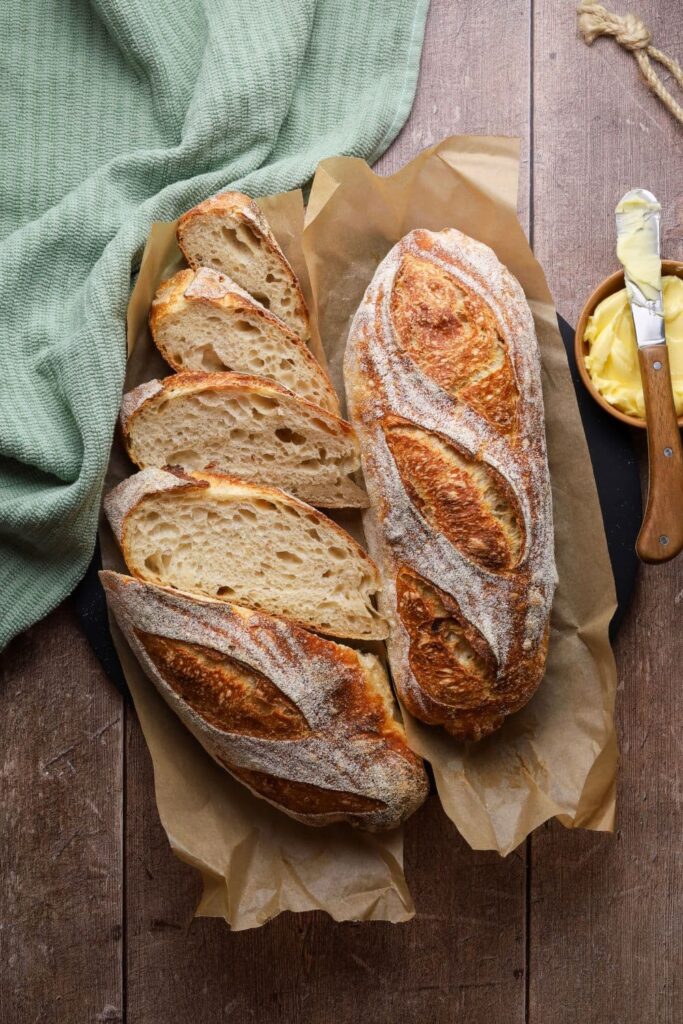
Frequently Asked Questions
No, you can bake the cut loaves for the same amount of time as you would bake the larger uncut boule or batard. For example when I cut a batard made from 500g of flour, I still bake for 30 minutes lid on and 10 minutes lid off, with the same temperatures as my simple sourdough bread recipe.
No, you want to cut them, gently seal them and then straight into a hot Dutch oven, just like you would a regular sourdough loaf.
As long as you make clean cuts and don't pull the dough or degas it too much, the crumb and rise should not be affected. I've done this process many times and found that as long as I didn't totally reshape the dough, I just cut it and resealed where necessary, the crumb and rise was perfect, just the same as if I never cut the dough. You can see in the photos above how beautiful the sourdough baked up, even after being cut.
To avoid degassing the dough, cut straight down using a sharp dough scraper. Don't pull the dough, use a clean, straight down cut without actually pressing or pushing down on the dough.
You can freeze the smaller portions of dough once it's been cut and before it is baked, however, there is never a guarantee that they will bake from frozen as well as they would from fridge temperature.




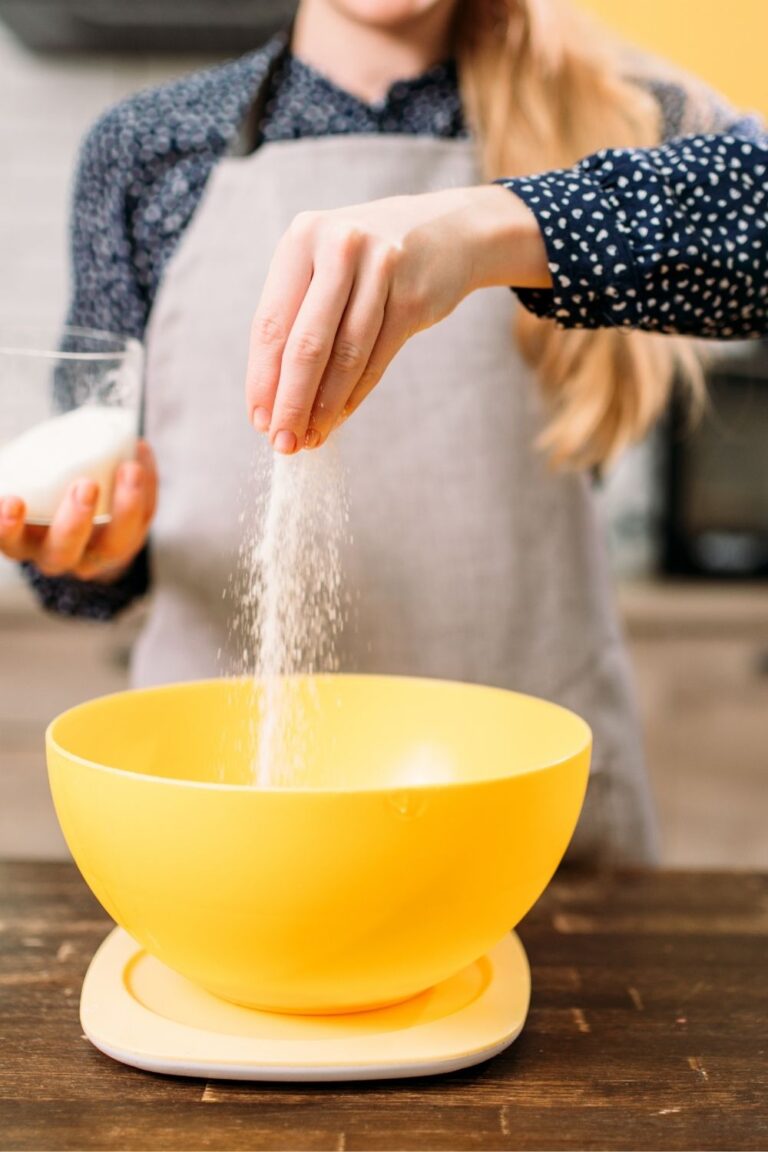
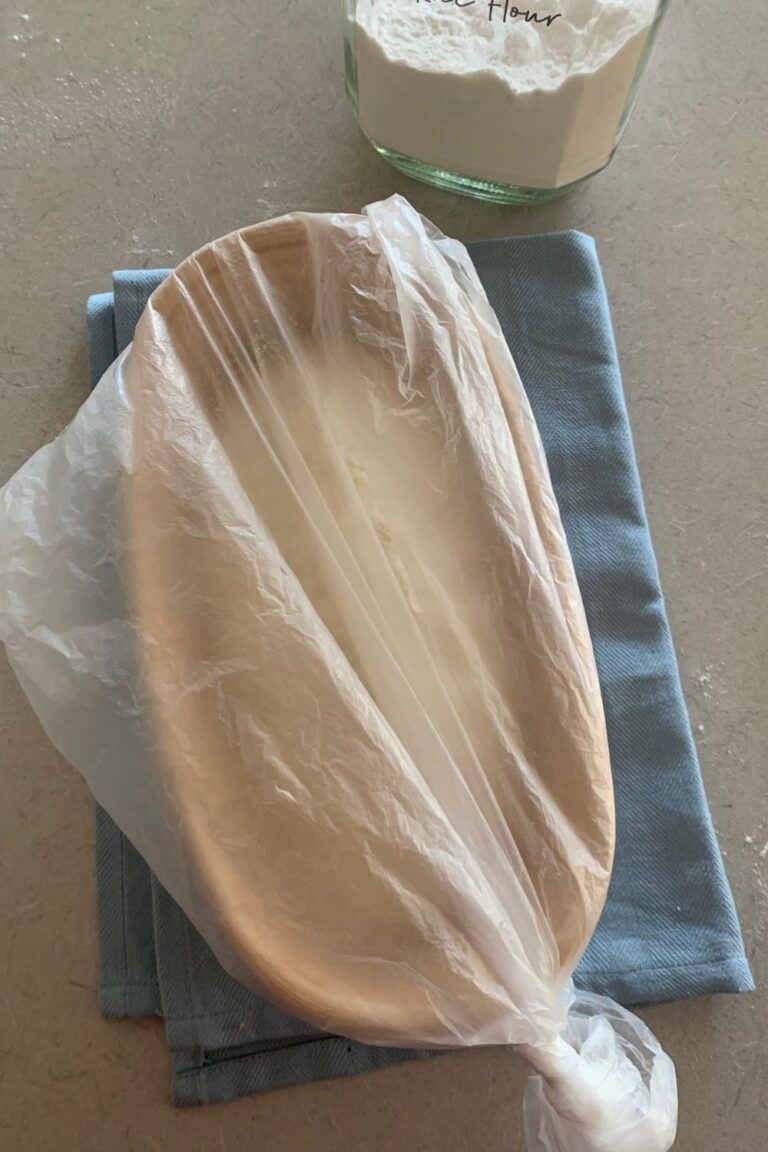
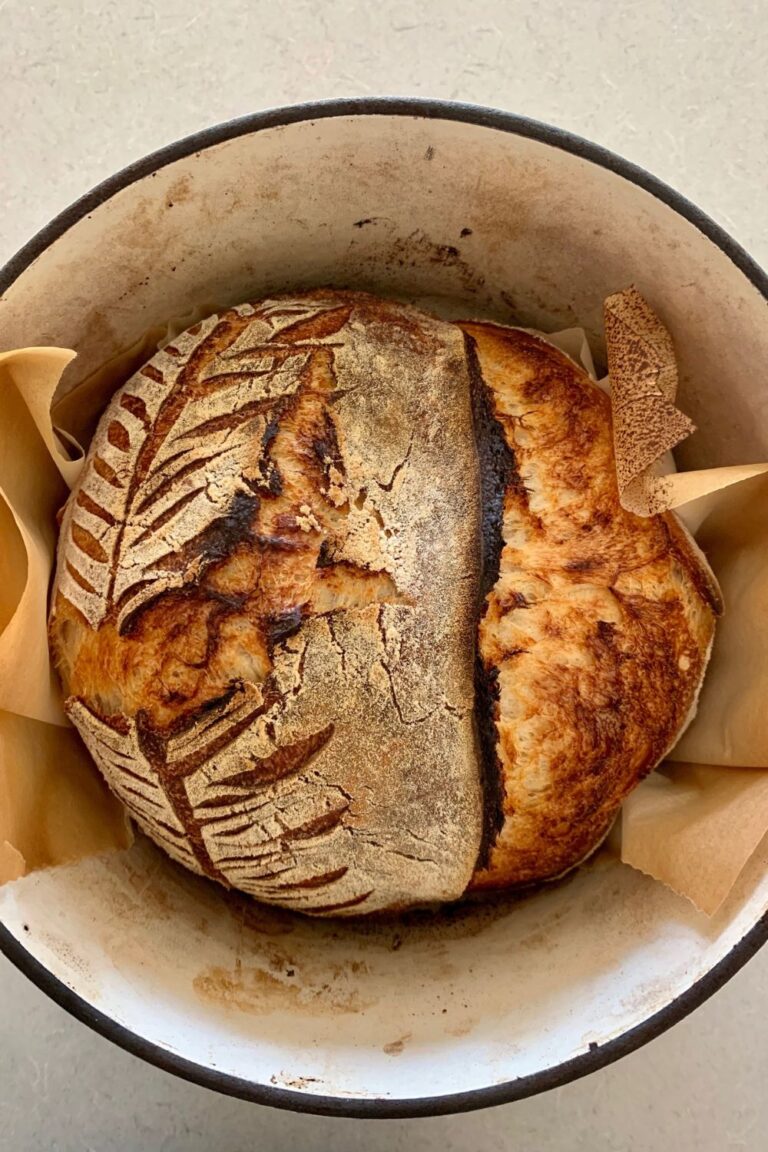
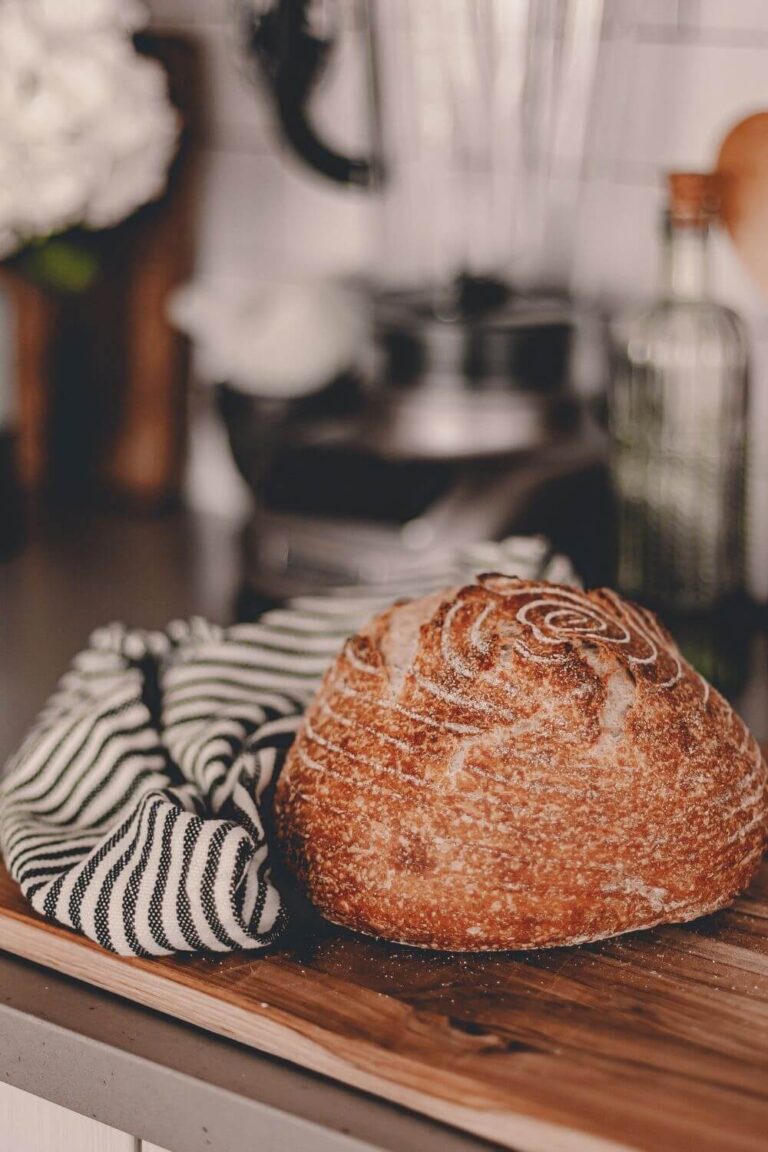

Thank you so much for this information. Can you give some tips on how to reseal the cut loaves without handling too much and degassing further? Thanks.
I'm so glad you found it helpful. I generally just seal up the cuts by pinching together or tucking them under (in the case of the rolls). Or if I can't reseal because of the rice flour or semolina on the outside, I will just tuck the cut at the bottom of the loaf. I actually have some videos coming out on this so you'll be able to see me in action (I'll be sure to link them here once I've edited them). xx
Hey Lisa - I've just added a YT video showing me creating 4 smaller loaves from one batard. I actually don't seal the seams completely in this video and the rolls still come out beautifully! They were so crispy and delicious! I'll have a video doing the rolls soon too! Hope this helps xo
Thank you for your recipe. Can you tell me how long to bake for and what temperature? Do you bake them covered then uncovered? I would love to have the recipe and process.
I've created a recipe for this process here 🙂
How do you “seal” the cut pieces??
Thank you for sharing this awesome info!
Heidi T
I generally just pinch the dough together - this works as long as you haven't used too much flour during the shaping process. Alternatively, if the dough won't seal together, you can tuck the seam underneath so that it doesn't burst on the top 🙂
This saved my bacon today! I made more large loaves and should have split those to 2 minis. So glad you had this all figured out and I was able to save my orders for minis! Thanks!